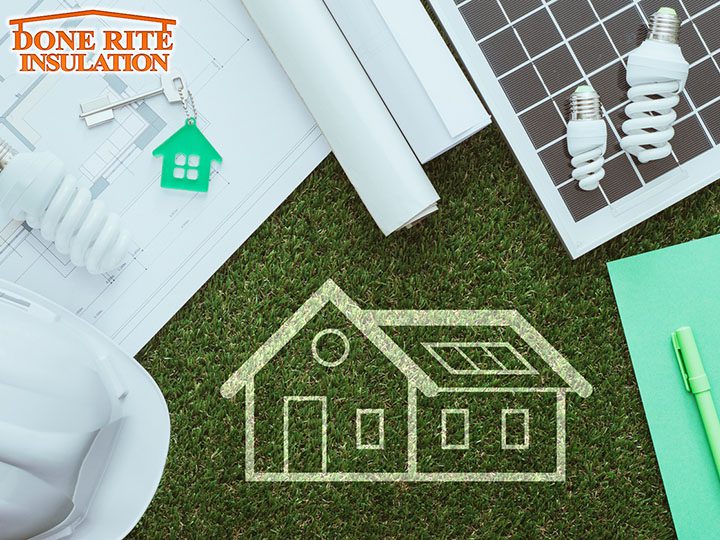 Keep in mind that your house is a whole system. You can save some money and also improve the performance of this system by taking cost-effective measures for reducing the load. You may use appliances and systems that are of the right size for meeting the decreased load. Oversizing always leads to raised costing and poor performance. One of the more effective strategies for an improved and energy-efficient home is to envelop the attic, doors, windows, and walls. Then try and improve the energy efficiency of various installed systems such as HVAC, lighting, and other appliances. You can think about installing clean energy providers such as geothermal or solar.
Keep in mind that your house is a whole system. You can save some money and also improve the performance of this system by taking cost-effective measures for reducing the load. You may use appliances and systems that are of the right size for meeting the decreased load. Oversizing always leads to raised costing and poor performance. One of the more effective strategies for an improved and energy-efficient home is to envelop the attic, doors, windows, and walls. Then try and improve the energy efficiency of various installed systems such as HVAC, lighting, and other appliances. You can think about installing clean energy providers such as geothermal or solar.
1. Ensure that attic and walls are well insulated: If you can provide effective insulation, it will slow down the heat flow rate into the house in summers and out of the home in winters. Therefore, you will need lesser energy for heating or cooling the house. In case there is no insulation on the walls and they have cavities such as stud walls, you can use blown-in insulation to improve the comfort zone and save a sufficient amount of energy to be cost-effective. In case the attic is not in a finished condition, you can upgrade its insulation.
2. Replace or upgrade the windows: If the windows of your home are leaky and old, it might be a good idea to replace them by using energy-efficient home models. You can also increase their efficiency by using storm windows and weatherstripping. Keep in mind that it is not cost-effective to replace the windows for saving energy. You can get more savings by replacing the single-glazed windows. But if you are going to replace the windows for some reason, the additional cost of star-rated windows is not much. This upgrade will raise your comfort level and it will be cost-effective.
3. Plant shrubs and shade trees around your house: If you have a slightly older home with poor insulation, you can adopt landscaping for improving energy efficiency. Plant the trees on the West side of the house. The foliage will block the infrared radiation in summers that warms the home. While during the winter months, the bare branches allow the radiation to seep through. However, if your place is an energy-efficient home with good insulation and energy-star windows, this effect is a lot lesser as the shell of the building blocks most of the heat.
4. Replace the old furnace with more energy-efficient systems: If the house furnace was built earlier than 1992 with a standing pilot, in all probability it is wasting around 35% of the fuel it is using. It is also close to the end of its lifespan. ACEEE in such cases recommends quick replacement by using a condensing furnace that has annual efficiency of 90%. This kind of furnace wastes just 10% of the purchased natural gas and can save close to 25% on the heating bills. Using modern condensing boilers is a good substitute for boilers hot water distributors of yesteryears such as baseboard and radiators.
5. Try to improve the hot water system efficiency: Firstly, turn down the water heater temperature settings to warm (around 129-degree F). Secondly, insulate the hot water lines. this will ensure that they are not cooling off fast between uses. Thirdly, you can use low-flow fixtures such as baths and showers. Even though in 2001 the storage water standards were raised, they were not sufficient to justify throwing out the existing water heater that was working well. Hot water circulating loops are installed by some contractors these days to accelerate hot water delivery in your energy-efficient home.
6. Replace the light bulbs with CFLs: CFLs are capable of saving 75% of the energy used by incandescent light bulbs. Many people do not take into account the fact that running a light bulb costs a lot more than buying the bulb does. Some of the new CFLs will cost around two to three dollars but they last 10,000 hours and they use around 27 watts compared to the 100 watts used by the bulbs during a fixed period. If you do the math properly you will realize that the lighting cost of CFLs is less than a third of the light bulbs.
There are raters and energy auditors available out there that use specialized tools and skills for evaluating the house and recommending the best measures for improving the efficiency and comfort levels to develop energy-efficient homes. They can also arrange the best sequence for taking advantage of interactions. You need to consult just the accredited raters for this purpose. If you live in Clearwater, FL area, you can consult Done Rite Insulation for advice. There are some energy star programs available in some areas that provide a low-cost home assessment with good quality practices.
Picture Credit: iStock









